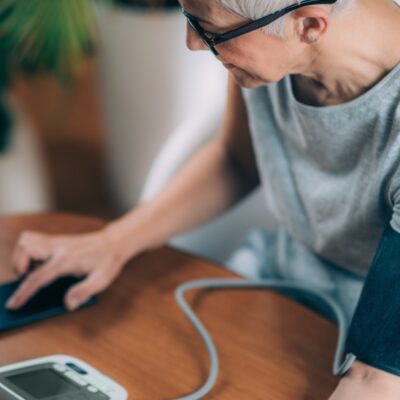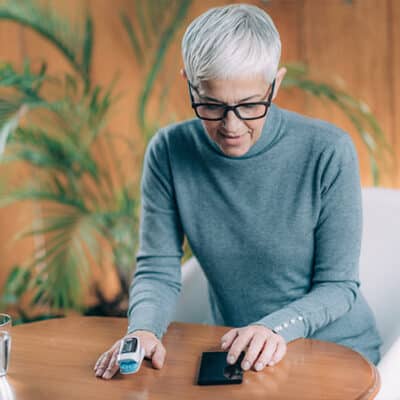Remote patient monitoring (RPM) programs can improve the quality and accessibility of care for patients with chronic obstructive pulmonary disease (COPD). With easy to use remote devices and supportive care teams, COPD can be prevented and treated without putting patients at risk during in person visits. This remote treatment can be made personal by utilizing patient data to identify patterns and trends so that providers can detect and even predict when an emergency situation might occur. RPM enables direct and accessible communication between providers and patients with COPD in order to track and assess symptoms remotely while keeping patients safely at home.
What is a remote COPD monitoring program?
Remote COPD monitoring consists of measuring a patient’s pulse and blood oxygen remotely through a pulse oximeter which can monitor the efficacy of treatment. RPM not only enables potentially life saving early detection of low blood oxygen levels in COPD patients, but also eliminates the need for unnecessary exposure to the current COVID-19 public health crisis via in-person visits. With consistent daily measurements, providers can care for their patients more closely even from afar. The most comprehensive RPM company will be one without upfront costs for practices. In order for remote care to improve patient health and benefit providers, it must be cost effective, accessible to patients and compatible with Medicare reimbursement methods for practitioners.
How can remote patient monitoring help with COPD?
Time and time again RPM has demonstrated the ability to help COPD patients and improve the quality of care and chronic disease management. Daily measurements with remote care devices can improve both patient and provider understanding of COPD and create a personalized patient care plan.
What can be used to monitor COPD?
With devices such as pulse oximeters, remote care can reduce the amount of in person care required to care for patients with chronic conditions like COPD. Pulse oximeters are especially helpful for COPD patients as they measure blood oxygen levels and can determine whether a patient is breathing properly and if their heart is receiving enough oxygen. Patients who utilized these remote devices had reduced hospital admissions, shorter hospital stays, and fewer trips to the emergency room. Studies have shown that remote patient monitoring is proven to reduce the need and level of acute care use for COPD patients. Additional studies have demonstrated the general practical benefits of RPM specifically in COPD patients and have been able to identify the key predictors and exacerbations of COPD. Remote care is not only capable of providing a lifeline between patients and their doctors, but of preventing future emergencies and reducing hospital visits.
What happens if a patient displays signs of COPD?
While monitoring patient data, clinicians can provide more accurate diagnoses based on regular biometrics measured between visits. If a patient suffering from or vulnerable to COPD displays signs of a COPD related emergency, providers are able to intervene and prevent symptoms from escalating. With consistent data taken daily in the patients own home, clinicians can detect changes in patient biometrics, such as a drop in blood oxygen levels.
When patients report readings outside of their designated range staff are notified. Medicare requires that clinicians receive such notifications and remain informed by their remote patient monitoring system so that they can continue to be reimbursed by the program. RPM companies make population health management and Medicare reimbursement easy, keeping patients safe and clinicians reimbursed through the program. RPM gives patients the ability to measure their pulse from the comfort of their home while ensuring that they are cared for with the most personalized management and treatment plans their clinicians can provide.



